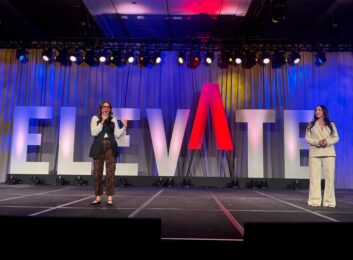Closing big deals are usually a cause for celebration, but when John Ayo closed a deal while working for IBM, Ayo simply didn’t feel good enough to celebrate. He went to a doctor, and after spending thousands of dollars, he was simply told, “It’s all in your head.” This disappointment led to his journey into alternative medicines.
“I started going to chiropractors and acupuncturists, and they became my teachers and my friends. I got fascinated with the world of natural health,” the wellness expert said during his recent Smart Meetings webinar, “Wellness Magic: Secrets for Energy, Vitality and Longevity.”
During the webinar, Ayo shared insights he’s gained during his health and wellness journey. He will be speaking at Smart Meetings Experiences Dallas-Fort Worth March 26 at The Westin Irving Convention Center at Las Colinas.
“When people don’t feel good, it shows up as burnout and as attention issues, he said. “It can also show up as productivity problems. There is an ROI impact when people don’t feel good.”
He says stress is the main cause of chronic illness. “It turns out about 92 percent is caused by stress. And what are those stressors? We know the ones in the events world, but there are some others, as well,” he said.
More: 3 Easy Ways to Integrate Wellness into Your Day
Nutrition First
Ayo began the webinar by talking about food—or what he calls “food-like products.” He said that when you go to the grocery store, most of these products are in the center of the store, with the fruits and vegetables typically sitting around the periphery.
“When you look at labels and you see ingredients with very long names and a lot of preservatives, you have to wonder, ‘How did we get here?’” he said.
The roots of the situation can be traced to meals ready to eat (MREs), which were created when Americans faced the challenge of getting food to troops throughout the world during World War II. The solution was preservatives, but companies continued adding preservatives after the war because it was great for business. The downside is that they’re not very healthy for us.
Take honey crisp apples, for example. They are hybrids made with high sugar content, so they taste good. Unfortunately, high sugar content isn’t good for you. Ayo recommends eating foods that have less than 6 grams of sugar.
Organic fruits and vegetables provide a healthy alternative. “They tend to be the ones that aren’t sprayed with a lot of chemicals, herbicides and pesticides,” he said.
Cruciferous vegetables are good, as they help move estrogen out of the body. “Part of the problem that we have is we’re in an estrogen-dominant world because of all of these toxic compounds that mimic estrogen,” Ayo said. “Some of the soy products can do that, and having too much estrogen can lead to certain issues, such as breast cancer.
“And when you look at the labels of supplements, I suggest the whole food ones that have names you recognize, such as broccoli, carrots, beets, parsley and cherries, as opposed to [a] thousand milligrams of this and 400 IU’s of that,” Ayo says, adding that when it comes to vegetables, the darker, the better.
Sync Up with Mother Earth
Ayo also discussed the dangers of frequency signals. When 4G, 5G and Wi-Fi frequencies hit our bodies, they want to get in sync with them. Unfortunately, those frequencies are very fast, and that speeds us up, sometimes causing anxiety and presenting bodily challenges.
“I believe that cellphones are like the cigarettes from the 1960s,” he said, adding that plenty of research is showing the impacts of Wi-Fi networks and cellphones, and they’re becoming increasingly powerful. “Yay for technology and speed, but again, much like with processed food, it’s not so great for our bodies,” he said.
Ayo said that whenever possible, keep your cellphone at least 6 feet away from your head, because it causes stress in your body. “Clear all the electronics away from your head,” he said.
It’s only natural that planners want their attendees to have great Wi-Fi reception. “But at what cost? How can we trick them into getting bare feet on the earth?” Ayo asked. He recalled one way: At an event he spoke at last year, attendees had lunch from food trucks after the keynote address. The food trucks were outside on the lawn, and everyone took off their shoes.
Ayo says that “earthing”—getting your bare feet on the planet—slows the body down to its normal state. He counteracts jet lag by connecting his bare feet with the Earth for at least 20 minutes at a time.
“When I stand with bare feet on the Earth, I’m actually connecting with a metronome on this planet,” he said. “There’s a heartbeat to the Earth—it’s called the Schumann frequency.” This electromagnetic current has been running along the Earth for thousands of years, at about 7.8 Hz, or almost eight cycles per second, which is the approximate frequency in which relaxed humans should be operating.
.




